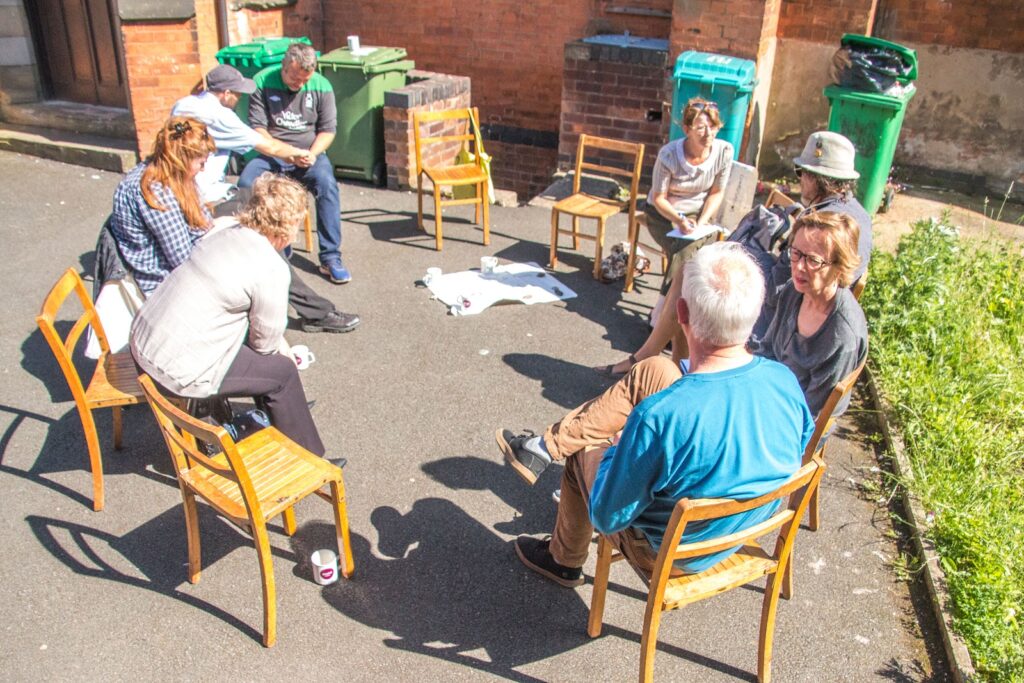The Facing the 2020s report
As the pressures on all of us keep rising, we can see mounting discord about best priorities and solutions. One of the few topics on which almost everyone agrees is that increasing the resilience of local communities is getting ever more vital. This has been a focus of my work since 2012, so I’m offering an overview of some of my insights.
As part of a project called Facing the 2020s, in 2012 I commissioned a substantial piece of action research on UK community resilience by Reos Partners, which included over thirty diagnostic interviews, extensive desk research, and exploratory workshops in London, Edinburgh and Cardiff with potential stakeholders, including national and local government, NGOs and community organisations. This blog is a summary of the insights I gained from this research.
The terms community and resilience are so heavily used that a short explanation of what I mean by community resilience may be wise: the collective capacity of a group of people to handle and grow through crises and challenges. I’ve set out below some of the main aspects of resilience in this context: part of this capacity could come from organisations, including local authority, public services and non-profit groups.

Material: some capacity to respond locally to interruptions in food, energy supplies, especially for elderly and vulnerable people.
Environmental: response to ecosystem damage, eg habitat loss, pollution and to extreme weather, eg floods, droughts.
Wellbeing: for everyone’s emotional needs, especially those who have mental health or isolation issues.
Inspirational: maintaining and renewing a sense of vision, cohesion and purpose in the community in the face of a crisis.
Connective: good communication within the group, including the skills of hearing, voicing, reconciling strong differences in opinions and values.
The main insights from the Facing the 2020s research are these:
- Reproducibility: On most aspects of community resilience, there are successful exemplar projects somewhere in the UK. For a concise, inspiring range of examples, see the book The New Road, by Alf and Ewan Young. Why have these not been widely reproduced? One reason is that many good community resilience initiatives have depended on a few superhuman people, who just kept going against impossible difficulties. How can such interventions be systematised so that regular humans could implement them in a bigger number of communities? Recording what was done in an accessible toolkit form would help a lot.
- Sustainable funding: Many good initiatives have also depended on funding that was not reproducible, e.g. a slab of one-off grant funding as part of a pilot programme by an NGO. Sustainable funding sources could include raising capital from local communities themselves, (eg crowdfunding), or a social enterprise model, or a couple of larger foundations offering a grant scheme plus support to use it.
- Professional services: Many community initiatives struggle to find professional support geared to their particular needs, in finance, legal, property, HR and other areas. The emergence of specialists for this sector would greatly assist reproductivity.
- Systemic catalysts: In my dream of raising UK community resilience, a focal role would be played by trained advocate-facilitators, who would go into a community to understand its needs and dynamics, help gather support and a project team and could provide access to reproducible role models, sustainable funding, professional services and more.
- Working with minority groups and communities of identity: Some communities will be more vulnerable to shocks than others, and history tells us that unresolved social tensions bubble up at times of stress. Resilient societies and communities rely heavily on social cohesion. The benefits of working on community resilience now include the opportunity to pre-empt more severe ruptures to social cohesion which are likely to arise from the major stresses ahead. It is important to involve minority communities in the resilience journey, and communities of identity such as LGBT, instead of focussing solely on geographic communities.
- Wider participation: Many places don’t have a strong sense of community, and in most of those that do, only a tiny percentage of people participate actively in community matters. How could larger numbers of communities, and larger numbers of people, have a motivation to participate in community resilience, including ethnic and low-income communities? This is a crucial issue, which will become more acute amid the pressures ahead: it would be great to see a couple of enlightened large NGOs fund pilot projects and gathering of best practice to move this forward.
- Engaging local authorities: As funding for services has moved from central government to local authorities, many local authorities have worked to further devolve decision-making and budgetary decisions to local communities. This means that in some parts of the country, local communities are strongly engaged with the local authority, and structures exist to support these partnerships. This move towards greater local control highlights the exciting potential to tackle many priorities (environmental, public service reform, etc.) by adopting a resilience approach and involving local people in community action and resilience building. In recent years, some local authorities have become real innovators in new forms of service delivery, partnership working and more. The replication issue applies here too. Is there currently an easy way to access best practice and role models in this area?
- Building national resilience: Most approaches towards community resilience take place at a geographic community level. However, examples from UK history and from other countries indicate real benefits in national-level approaches towards resilience. Some of the countries that are considered the most resilient, such as Japan, Norway, Sweden and Denmark, have a strong national resilience policy. If the UK had this too, it would make local initiatives more effective.
- Online resilience services: A massive opportunity for innovation! If I continue to dream, I imagine social entrepreneurs and progressive NGOs helping to create new apps and web services, alongside businesses.
